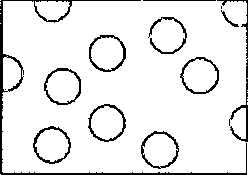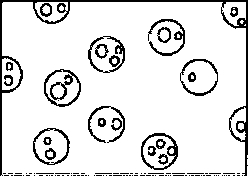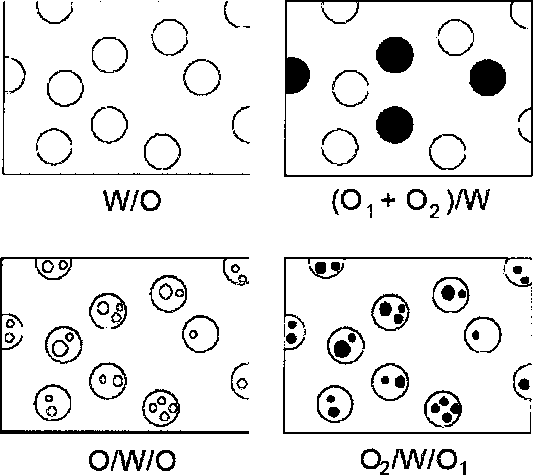Chapter 2
Some qualitative procedures can be used to discern emulsion type. One
simple method is contacting a drop of the emulsion with water or oil and observing
whether the external phase is miscible or not with it. However, this method can’t
distinguish simple and multiple emulsions.

O∕W

W∕O∕W

Figure 2.2 Morphologies of different type of emulsions [2]
The type of emulsion can also be determined by measuring its electrical
conductivity. The aqueous phase in an emulsion usually contains electrolytes and
therefore a relatively high conductivity should be observed (of order mS∕cm) for
O∕W emulsion with water as external phase. On the contrary, in most cases
non-polar liquids exhibit very low electrical conductivity (of order μS∕cm), and so
would W∕O emulsions with oil as external phase.
More intriguing information
1. El Mercosur y la integración económica global2. LOCAL PROGRAMS AND ACTIVITIES TO HELP FARM PEOPLE ADJUST
3. Response speeds of direct and securitized real estate to shocks in the fundamentals
4. The name is absent
5. Who is missing from higher education?
6. EXPANDING HIGHER EDUCATION IN THE U.K: FROM ‘SYSTEM SLOWDOWN’ TO ‘SYSTEM ACCELERATION’
7. The name is absent
8. Influence of Mucilage Viscosity On The Globule Structure And Stability Of Certain Starch Emulsions
9. Neighborhood Effects, Public Housing and Unemployment in France
10. The name is absent